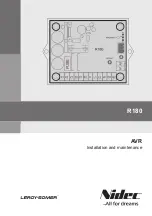
ES0755 rev A 1/11
1
HS-3/4/6/7 VS-1/3
INSTALLATION INSTRUCTIONS
G
eneral
r
equirements
Operating Temperature Range
41°F to 104°F (5 to 40°C)
Storage Temperature Range
-4°F to 158°F (-20 to 70°C)
Ambient Humidity: 20% – 95% relative humidity, non-condensing
Altitude: 0-7000 ft.
e
lectricity
r
equirements
IMPORTANT! REFER TO LOCAL CODE REQUIREMENTS BEFORE WIRING MACHINES.
ALL MACHINES REQUIRE:
Three phase 50 or 60Hz power supply.
Line voltage that does not fluctuate more than +/-5%
40-30 HP System
Voltage Requirements
(195-260V)
Power
Supply
125
AMP
Haas Circuit Breaker
100 AMP
If service run from elec.panel
is less than 100’ use:
2 GA. WIRE
If service run from elec. panel
is more than 100’ use:
0 GA. WIRE
TSC-1000 Machines:
Refer to the TSC-1000 installation procedure in this document for electrical require-
ments.
WARNING!
A separate earth ground wire of the same conductor size as the input power is required to be connected to
the chassis of the machine. This ground wire is required for operator safety and for proper operation. This
ground must be supplied from the main plant ground at the service entrance, and should be routed in the
same conduit as the input power to the machine. A local cold water pipe, or ground rod adjacent to the ma-
chine cannot be used for this purpose.
Input power to the machine must be grounded. For wye power, the neutral must be grounded. For delta
power, a central leg ground or one leg ground should be used. The machine will not function properly on
ungrounded power.
The rated horsepower of the machine may not be achieved if the imbalance of the incoming voltage is beyond
an acceptable limit. The machine may function properly, yet may not deliver the advertised power. This is
noticed more often when using phase converters. A phase converter should only be used if all other methods
cannot be used.
The maximum voltage leg-to-leg or leg-to-ground should not exceed 260 volts.
The high voltage requirements shown reflect the Internal 400V option which is available only in Europe. Do
-
mestic and all other users must use the External 480V option.
The current requirements shown in the table reflect the circuit breaker size internal to the machine. This
breaker has an extremely slow trip time. It may be necessary to size the external service breaker up by 20-
25%, as indicated by “power supply”, for proper operation.


































